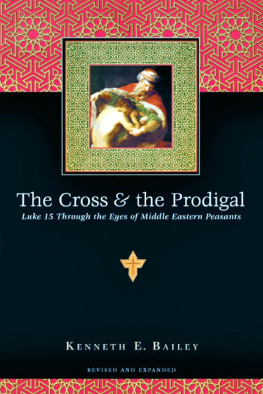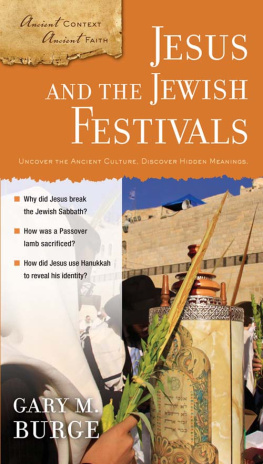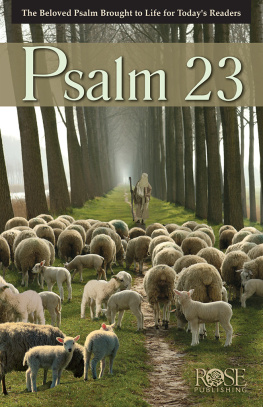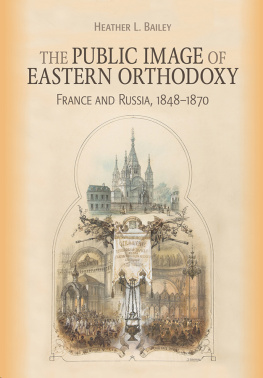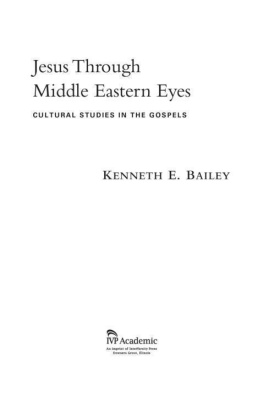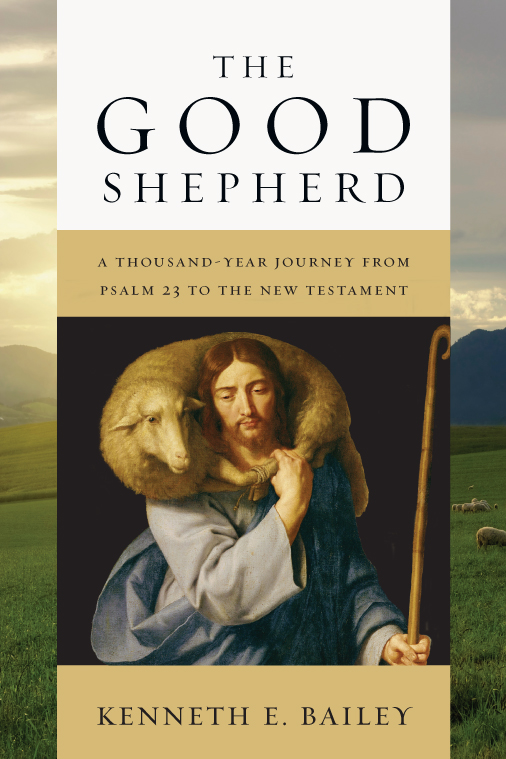to
John and Susan Bailey
and
Tim and Elizabeth Daigle
in gratitude for shared
faith,
family and
friendship
Beside the still waters.
Abbreviations
BAGD
Walter Bauer, W. F. Arndt, F. Wilber Gingrich, Frederick W. Danker, eds., A Greek-English Lexicon of the New Testament and Other Early Christian Literature (Chicago: University of Chicago Press, 1979).
Ibrahim Said, Luqa
Ibrahim Said, The Gospel of Luke (1970; reprint, Cairo: Middle East Council of Churches, 1980).
Ibn al-Salibi, Tafsir
Dionesius Ibn al-Salibi, Kitab al-Durr al-Farid fi Tafsir al-Ahd al-Jadid [The Book of Precious Pearls in the Interpretation of the New Testament], 2 vols. (Cairo: Abd al-Masih Dawlayani, 1914). Ibn al-Salibi wrote in Syriac and died in A.D. 1164. These volumes were translated into Arabic at the Monastery of Zafarani (Southeast Turkey) in 1728. Volume one (Matthew and Mark) lists no date or place of publication. However volume two (Lukeand John) lists Cairo, 1914 as the place and date of publication.
Ibn al-Tayyib, Tafsir
Ibn al-Tayyib, Tafsir al Mashriqi, 2 vols. (Cairo: Towfiq Press, 1910).
LVTL, Lexicon
Lexicon in Vetris Testamenti Libros, ed. Ludwig Koehler and W. Baumgartner (Leiden: E. J. Brill, 1958).
LSJ, Greek-English Lexicon
H. G. Liddell, Robert Scott and H. S. Jones, A Greek-English Lexicon, rev. J. S. Jones (Oxford: Clarendon, 1966).
TDNT
Theological Dictionary of the New Testament, ed. Gerhard Kittel and G. Friedrich, 10 vols. (Grand Rapids: Eerdmans, 1967-1976).
Midrash is the hammer
which awakens the slumbering sparks
in the anvil of the Bible.
Babylonian Talmud,
Sanhedrim
Preface

M y journey with the theme of this book began with seven years of my childhood in the late 1930s in the south of Egypt, where my family lived in the village of Edmu in the province of Minya. After some years of absence, that journey continued from the mid 1950s and into the 1960s when I served for ten years with the rural churches of the Egyptian Evangelical Church in the same district. This was followed by twenty years in Lebanon, and finally by a further ten years living and teaching at the edge of Bethlehem in Israel/Palestine at the Tantur Ecumenical Institute, where shepherds grazed their flocks around us. Thus, for nearly fifty years, Middle Eastern shepherds with their flocks were a part of the larger context in which I grew up and then lived and taught the New Testament. It was my privilege to have laymen and clergy in three countries as my students who had herded sheep for extended periods in the Eastern Mediterranean.
Sheep-herding in the Middle East falls into two overlapping categories. First, there are the seminomadic sheep herders who often have large herds and spend months away from their villages following seasonal rains and grazing the open pasture land. Second, there are settled village families, each of whom owns a few sheep. It is customary for a number of families to combine their animals, and for one young man (or two young women) to form them into a herd and take them out each day to graze. This second pattern is widespread and more universal than the first. Some villagers develop large herds and still return to the village each night.
Countless books and articles have been written on the texts selected for this work. Of particular interest are the brief monographs written by Middle Easterners who in their earlier years themselves herded sheep. Each of these shepherds emigrated to the West, and at some point in their lives, using their own personal experience as shepherds, published their perceptions of Psalm 23. I have chosen five such accounts in which these two patterns are observable. The five are as follows:
Rev. M. P. Krikorian grew up in the late nineteenth century in the mountains behind the cities of Tarsus and Adana, which are now in Turkey. While he was in high school his family acquired a herd of a hundred sheep, and his father selected him to herd them. Initially the young man wept bitterly at the suggestion because it meant that he was obliged to drop out of school.
Rev. Faddoul Moghabghab was born in the city of Ain-Zehalta in the mountains of Lebanon. As a young man he herded the familys small flock. As he notes, My father owned a number of sheep and lambs; it is customary for all the people of Mount Lebanon to keep a few sheep. Later in life he attended university and seminary in Beirut and in time emigrated from Lebanon to America, where he wrote a book about his experiences as a Middle Eastern shepherd.
Moving from north to south across the Middle East, a brief but useful account of the life of a shepherd is available from George M. Lamsa. A deacon of the Syrian Orthodox Church, Dr. Lamsa grew up in a community of seminomadic sheep herders in Syria. He writes,
My ancestors for untold generations were sheep raising people. My father and my mother loved and tended sheep. I was raised in a sheep camp. We lived in a tent made of the hair of goats just as Abraham and Isaac did. Like other boys, I was taught and disciplined by the shepherds. Since my father was chief shepherd, I was taught thru [sic] his wisdom.
Lamsa became a Syriac scholar and translated the fourth-century Syriac Bible (the Peshitta) into English. He also published many other books recording his studies of and reflections on that same Syriac Bible. Along with these numerous works he published a short study titled The Shepherd of All: The Twenty-Third Psalm.
Stephen A. Haboush grew up in Galilee. In his youth he became the shepherd of the family flock of sheep. Later in life he immigrated to America and wrote a book titled My Shepherd Life in Galilee: With an Exegesis of the Shepherd Psalm. His short work is authentic and helpful.
Abrahim Mitri Rahbany was not a shepherd, but he grew up in the mountains of what is now Lebanon, surrounded by farmers and shepherds. He observed those shepherds with their sheep on a daily basis for all of his early years. Later in life he wrote a book that covers many aspects of Eastern life and the Gospels. This book, titled The Syrian Christ, includes a helpful chapter on sheep and shepherds.
In addition to these five Middle Easterners we can note two Westerners, one American and the other British. William Thompson lived and served in Lebanon for twenty-five years as a missionary of the American Presbyterian Church. He learned Arabic well and made numerous extensive journeys on horseback across what is now Lebanon and Israel/Palestine. His observations and reflections were published originally in 1858 in two volumes under the title The Land and the Book.
Of more limited value are recent accounts by Westerners who were at various times in their lives exposed to shepherds and their sheep. Leslie D. Weatherhead of England gathered data regarding sheep from as far away as India, These authors apply experience from sheep-herding in Africa, Asia and America to Psalm 23. Occasionally it fits and is useful.
In addition to these English-language sources, this study has relied heavily on the Arabic writings on the good shepherd texts that are available to us. Much has been lost across the centuries, but a few treasures, ancient and modern, have survived. I have had the following available to me.



